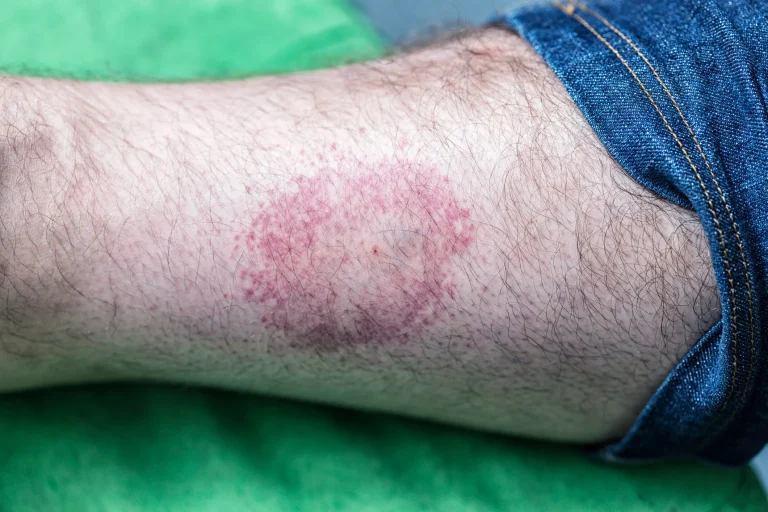Have you ever returned from a hike, spotted a tiny tick on your skin, and thought, “Should I be worried?” You’re not alone. In a study published by Occupational Safety and Health Administration, nearly 500,000 Americans diagnosed annually.
Lyme disease has indeed become the most common vector-borne illness in the United States, according to The Journal of Infectious Diseases with significant increases in reported cases over recent years.
What Is Lyme Disease?
Lyme disease is a tick-borne illness caused primarily by the bacterium Borrelia burgdorferi (and in Europe/Asia, sometimes Borrelia afzelii or Borrelia garinii). It is the most common vector-borne disease in North America and Europe. The infection is transmitted to humans through the bite of infected black-legged ticks, also known as deer ticks (Ixodes scapularis in the U.S. and Ixodes ricinus in Europe).
In an article published by U.S. Pharmacist, it was noted that Lyme disease named after Lyme, Connecticut, where it was first identified in 1975, now spans across much of the U.S., particularly in the Northeast, Upper Midwest, and Pacific Northwest. Tick season peaks from April through October, but cases can occur at any time of the year.
What Causes Lyme Disease?
Lyme disease is caused by infection with the Borrelia burgdorferi bacterium, transmitted via bites from infected black-legged ticks. The risk increases with outdoor exposure in tick-endemic areas, especially during warmer months.
These ticks become infected after feeding on small animals like mice or deer, which act as natural reservoirs for the bacteria. For the infection to be passed to a human, the tick must typically be attached for 36–48 hours.
Is Lyme Disease Contagious?
No. Lyme disease cannot be spread from person to person.
You cannot contract it through:
- Touching or kissing someone with Lyme
- Sexual activity
- Breastfeeding
- Airborne exposure
- Sharing food or drinks
- Contact with infected pets
The only way to get Lyme is from the bite of an infected tick.
Symptoms of Lyme Disease
Lyme disease symptoms progress in stages often beginning with a bull’s-eye rash and flu-like illness, and potentially advancing to involve the nervous system, joints, or heart if untreated. Prompt medical care is key to avoiding serious complications.
Early Stage (3–30 days after tick bite)
- Bull’s-eye rash (erythema migrans) in 70–80% of cases
- Fatigue
- Fever and chills
- Body aches
- Swollen lymph nodes
- Headache
- Joint pain
Later Stages (days to months after infection)
- Severe joint swelling and pain (especially in knees)
- Facial palsy or drooping
- Additional rashes
- Lyme carditis – irregular heartbeat
- Dizziness, shortness of breath
- Neurological symptoms: brain inflammation, nerve pain
- Tingling or numbness in hands or feet
Can Lyme Disease Be Fatal?
While Lyme disease is rarely fatal, severe complications can occur, especially if the infection is left untreated. Deaths from Lyme disease are extremely uncommon, but in rare cases, it can lead to life-threatening cardiac or neurological complications. Most people recover fully with prompt antibiotic treatment.
What Does the Lyme Disease Rash Look Like?
The Lyme disease rash, known as erythema migrans (EM), typically appears in the following ways:
- Shape and Size: The rash often has a circular or oval shape. It may start small and expand gradually. It can range in size from a few inches to several inches across.
- Bull’s-eye Appearance: A classic feature of the rash is its characteristic “bull’s-eye” or target-like appearance. The rash has a central red spot with a clear or lighter-colored area in the middle, surrounded by a red ring.
- Color: The rash is usually red, but it may also appear pink or darker depending on skin tone. The outer edge of the rash might be slightly raised and swollen.
- Location: It often appears around the site of the tick bite, but it can appear anywhere on the body, commonly on the thighs, groin, armpits, or upper arms.
- Symptoms: The rash is usually not itchy or painful, but it may be warm to the touch. It typically appears 3 to 30 days after a tick bite and may last for several weeks.
Not everyone with Lyme disease develops this rash, and it might be subtle in some cases. If you notice a rash like this and have had a tick bite or exposure to areas where ticks are common, it’s important to consult a healthcare provider for further evaluation and treatment.
Is Lyme Disease Curable?
Yes, Lyme disease is generally curable, especially when diagnosed and treated early. According to Health.com, the tick-borne illness can be treated with antibiotics, and most people are cured within two to four weeks.
The typical treatment involves a short course of oral antibiotics, such as doxycycline or amoxicillin, which can effectively clear up symptoms in most cases. The exact drug, dosage, and duration a healthcare provider prescribes depend on factors like your age and health history.
How to Prevent Lyme Disease
Preventing Lyme disease primarily involves reducing the risk of tick bites. Here are some effective measures to protect yourself:
- Avoid Tick-Infested Areas: Stay on cleared, well-traveled paths when hiking or walking in wooded, grassy, or bushy areas, as these places are more likely to harbor ticks.
- Use Tick Repellents: Apply insect repellents that contain DEET (for skin) or permethrin (for clothing and gear) to reduce the risk of tick attachment.
- Wear Protective Clothing: Wear long-sleeved shirts, long pants, and socks to minimize skin exposure. Tuck your pants into your socks to create a barrier.
- Check for Ticks Regularly: After being outdoors, conduct a thorough tick check on yourself, your children, and pets. Pay close attention to areas like your scalp, armpits, groin, and behind the knees.
- Shower After Outdoor Activities: Take a shower or bath within two hours of being outdoors to help wash off any ticks that may be crawling on your skin.
- Tick-Proof Your Yard: Keep your yard tidy by mowing the grass regularly, clearing brush, and creating barriers such as wood chips or gravel between wooded areas and recreational spaces. If possible, keep play areas away from tall grass or shrubs.
- Treat Pets for Ticks: Use tick prevention treatments on pets, such as collars, topical treatments, or oral medications, as they can carry ticks into your home.
- Remove Ticks Promptly: If you find a tick attached to your skin, remove it immediately using fine-tipped tweezers. Grasp the tick as close to the skin’s surface as possible and pull straight upward with steady, even pressure.
Disclaimer: This article is for educational purposes only and is not intended as medical advice. Always consult a licensed healthcare provider for diagnosis and treatment.
Lenstapes Med relies solely on reputable sources, including peer-reviewed studies, to back the information presented in our articles.
References
- MedlinePlus – Lyme disease.
- Britannica – Lyme disease | Definition, Cause, Rash, & Treatment | Britannica
- CDC – How Lyme Disease Spreads | Lyme Disease
- UpToDate – Patient education: Lyme disease symptoms and diagnosis (Beyond the Basics)
- Mayo Clinic – Lyme disease – Symptoms and causes
- Health.com – Lyme Disease: Cures and Treatment
- NIAID – Lyme Disease | National Institute of Allergy and Infectious Diseases
- Patient.info – Lyme Disease (Causes, Symptoms, and Treatment)
- Cleveland Clinic – A Tick Bite That Causes a Meat Allergy
- Occupational Safety and Health Administration – Tickborne Disease – Overview | Occupational Safety and Health Administration
- Oxford Academic – Lyme Disease Surveillance and Epidemiology in the United States: A Historical Perspective | The Journal of Infectious Diseases | Oxford Academic
- U.S Pharmacist – Lyme Disease
- Wikipedia – Erythema migrans – Wikipedia
- NEVBD – Blacklegged Tick – NEVBD
- IDPH – Lyme Disease Information for Clinicians
- Healthline – Is Lyme Disease Contagious? How It Spreads (and How It Doesn’t)
- MedlinePlus – Lyme disease.
- Britannica – Lyme disease | Definition, Cause, Rash, & Treatment | Britannica
- CDC – How Lyme Disease Spreads | Lyme Disease
- UpToDate – Patient education: Lyme disease symptoms and diagnosis (Beyond the Basics)
- Mayo Clinic – Lyme disease – Symptoms and causes
- Health.com – Lyme Disease: Cures and Treatment
- NIAID – Lyme Disease | National Institute of Allergy and Infectious Diseases
- Patient.info – Lyme Disease (Causes, Symptoms, and Treatment)
- Cleveland Clinic – A Tick Bite That Causes a Meat Allergy
- Occupational Safety and Health Administration – Tickborne Disease – Overview | Occupational Safety and Health Administration
- Oxford Academic – Lyme Disease Surveillance and Epidemiology in the United States: A Historical Perspective | The Journal of Infectious Diseases | Oxford Academic
- U.S Pharmacist – Lyme Disease
- Wikipedia – Erythema migrans – Wikipedia
- NEVBD – Blacklegged Tick – NEVBD
- IDPH – Lyme Disease Information for Clinicians
- Healthline – Is Lyme Disease Contagious? How It Spreads (and How It Doesn’t)




